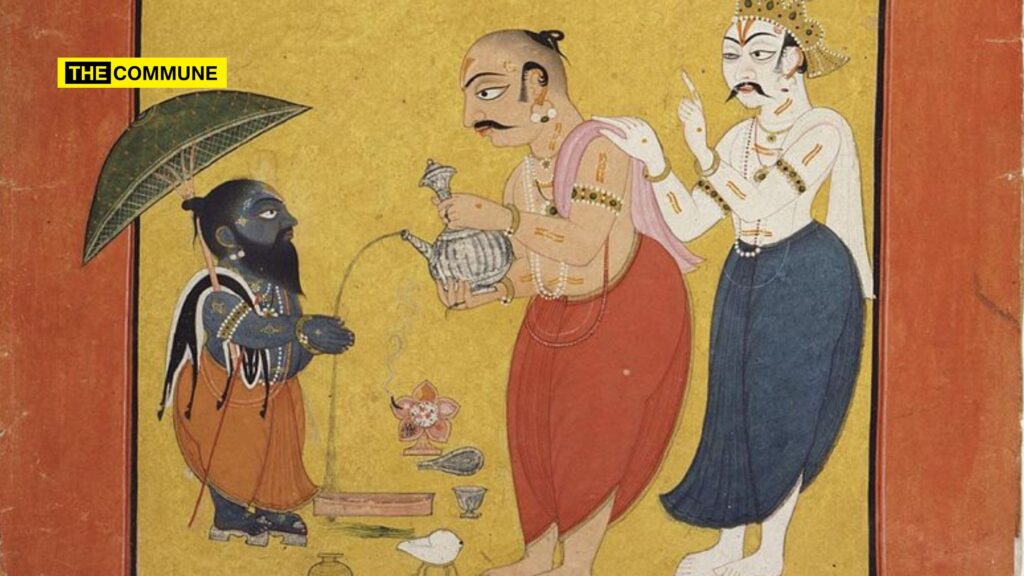Thiruvonam or simply Onam is a Hindu festival celebrated in the state of Kerala and by Malayalees across the world. It falls on the Thiruvonam nakshatram (star) in the Malayalam month of Chingam according to the Malayalam calendar, which is a Hindu calendar and has Hindu origins. Even though it is a Hindu festival, it is celebrated by non-Hindu Malayalees too as the festival is inherent to Kerala’s culture.
However, there have been many attempts to give a mischievous twist to the ancient tales associated with the festival by the cabal of usual suspects comprising of left/Marxist historians, liberal sociologists and Dravidian Stockists, who claim that the ‘dark-skinned Asura King Mahabali’ (or Maveli) was a just ‘non-Aryan’ king who was deceived by the ‘white invader Brahmin God Vamana’ and the entire land of Kerala got ‘sanskritised’ and colonised by the Brahmins with legends and mythology of the ‘subaltern castes’ getting antagonized or subsumed in the Hindu landscape. They claim that celebration of Onam is a ‘creative resistance’ against an ‘unjust invasion’.
While these distortions are rubbished by the masses, it serves as a fodder for Hinduphobic elements that satiates the itch to break civilizational and cultural unity of the land by peddling such narratives.
In this article, we bust these hollow narratives peddled by such elements.
Propaganda #1: Mahabali was a Dalit
Truth: He was not. Raja Mahabali was the grandson of Prahlada and the descendant of Sage Kashyap, thus a Brahmin himself. While the caste of a God/Asura does not matter for worship, one is pushed to emphasize on the same to give a rebuttal to the casteists masquerading as progressives.
Propaganda #2: Mahabali/Maveli was a Dravidian king.
Truth: Yes, he was a Dravidian king but not in the racial sense. He can be considered a Dravidian king because he belongs to the region of ‘tra’ (three) ‘vid’ (sea), the region where three seas meet.
If the Dravidian chauvinists refuse to accept the geographical definition of the term ‘Dravidian’, let it be known that Mahabali was a devout devotee of Lord Vishnu who in their lens is an ‘Aryan’.
Propaganda #3: Vamana was a white Aryan Brahmin.
Truth: There are many murals and paintings that depict Vamana as dark-skinned and Mahabali as fair complexioned. So, the argument that Vamana being a ‘white Aryan’ falls flat. But yes, Vamana was a Brahmin who had a physical deficiency.
This will come as a severe blow to Dravidian chauvinists but Vamana avatar is hailed in the Sangam text Perumpannatrupadai.
Propaganda #4: ‘Aryan’ Brahmin Vamana oppressed Dravidian Dalit king and overthrew his rule.
Truth: While the adjectives have been dealt with separately, let us see what the image of Mahabali kneeling down in front of Vamana with raised foot represents. Mahabali kneels down to receive Thiruvadi Diksha from Vamana avatar of Lord Vishnu. It is an auspicious way of initiation received by a shishya (disciple) from the guru (teacher). Through this, Mahabali’s ignorance and ego was removed and helped him attain mukti (salvation). Attaining salvation is not oppression but a rise in the status of the individual being to a higher level of consciousness. But a sick mind chooses to see what it wants to see.
The story also carries with it the moral of not underestimating someone who is physically challenged.
Propaganda #5: Vamana Jayanti is a Hindutva construct devised by the RSS
Truth: For centuries and millennia, Vamana Jayanti has been celebrated across India. The Vamana Murti temple in Thrikkara, Kochi is where the Onam festival starts as it is believed that Mahabali comes to visit his people every year starting with the worship of Lord Vamana at this temple. The Ulagalandha Perumal temple in Kanchipuram and Thirukovilur in Vizhupuram celebrates Vamana Jayanti. Many temples in Uttar Pradesh, Madhya Pradesh, Maharashtra, mark Vamana Jayanti.
Propaganda #6: Onam is a symbol of sustained resistance
Truth: As mentioned before, it is believed that Mahabali returns from Sutala (the auspicious higher plane) to the earth plane every year to visit the homes of his people. It is to mark his arrival and welcome him that Malayalees decorate their houses with poo-kolam. This is also done in remembrance of Raja Kulasekhara Azhvar who introduced Thiruvonam festival in the erstwhile Chera Nadu.
While it is too much to expect from the hollow heads that misrepresents and falsify history (or mythology if they want to call it that way), the least that they can do is not expose their cultural illiteracy in the name of bringing in ‘conflict perspective’.
Click here to subscribe to The Commune on Telegram and get the best stories of the day delivered to you personally.

